Sheltering in the shade, next to the buffaloes, the special police commandos shake their heads. "Everything is very quiet," says PC Bharat Parwan, looking across to the village 100 yards or so away across the rice fields.
The day before Parwan's unit arrived outside Pisai, a cluster of high-walled brick compounds in Bihar state, northern India, a landmine planted on the single track leading to the nearest town had killed the village chief and six others.
The murders attracted only brief attention nationally, and none internationally. But in Bihar, they have raised fears that the embers of a bloody insurgent conflict have been fanned back into life.
Behind the bombing is a story involving landlords defending their "ancestral rights", desperately poor labourers scarred by memories of massacres, a shadowy force of leftwing extremists, patchy law enforcement and – as ever in this deeply troubled part of such a vast country – politicians exploiting the tenacious caste system for electoral gain.
The target and one of the victims of the blast last October was Sunil Pandey, alleged to be a senior figure in a militia formed in 1994 to defend the interests of those at the top of the caste ladder in Bihar, but which has been largely dormant in recent years.
The Ranvir Sena militia, formed by men of the Bhumihar caste of landlords, is held responsible for a series of massacres of Dalits in the 1990s – those at the bottom of the caste system. These murders, in effect reprisals against local Maoists, who had also killed many, reached a bloody climax with the deaths of 58 men, women and children with no connection to extremism at the village of Lakshman Bathe in 1998. The Ranvir Sena, and Pandey, were blamed.
But last month, 24 men had their convictions for that massacre overturned by Bihar's high court. Pandey, 43, was released from a short spell in prison earlier this year on a technicality. Last week, his family praised the judges. "My husband did nothing more than defend his community. He was a social worker," Sudhar Devi told the Guardian.
A series of other high-profile prosecutions of Bhumihar landlords accused of involvement in the massacres has also ended in acquittals. In the aftermath of the most recent ruling, relatives say, Pandey was warned by the local Maoists that his days were numbered. "He was on their hit list. When it rained, they dug up the road and planted the mine and then watched," said Sandeep Kumar, 24, a nephew.
The Maoists, who are present across much of rural central and eastern India, said they had carried out the attack.
"In the prevailing system, it's impossible to get justice for the poor. The people's guerrilla army carried out the operation as the Ranvir Sena was trying to stop the people's revolution in Bihar," a statement given to local media said.
India's prime minister, Manmohan Singh, has described Maoists as the country's greatest strategic security threat. They have long been active in Bihar, a state whose social dynamics have proved a fertile ground for recruitment.
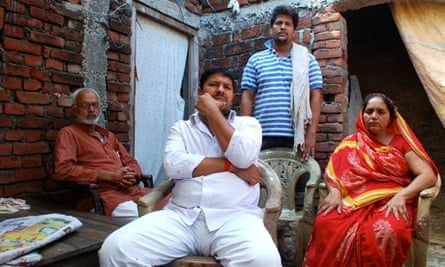
Pandey, who owned around 10 acres, died driving a Tata Safari, a car costing £10,000. His son is studying medicine at a private college in Delhi, the capital, 600 miles away. Labourers working in his field live in basic huts and receive 100 rupees (£1) or 4kg of rice for a day's toil, when there is work for them; and, as is customary, they may not share their employers' water sources or schools.
"It is a gift to the upper castes that they already have land. These are our ancestral possessions and our birthright,"said Ajit Kumar Singh, another of Pandey's nephews.
"We have had labourers in our fields for hundreds of years without problems. It's only in the last 20 years there have been problems. These labourers and these Maoist people want to snatch our land from us. Any actions we have done or taken are just in retaliation. We act just in defence of our honour and of our bread and butter."
In recent years, the Maoists, whom critics accuse of racketeering, intimidation and meting out brutal rough justice, have been pushed out of their traditional strongholds in Bihar and into more remote, hilly areas. The killing of Pandey signals a resurgence. Posters have now appeared in villages across Bihar's Aurangabad district listing 22 men on the Maoists' hit list and pledging that all who helped Pandey will suffer consequences.
"A lot of senior Maoists have been arrested or laid down their arms, and the Ranvir Sena had virtually disbanded. The recent killing seems to have revived the old, bloody battle," said Manoj Chaurasia, a Patna-based journalist who has long covered the conflict.
Lakshman Bathe lies 20 miles from Pisai. With its cattle, hordes of children, tall palms and small temple, it looks like any other village along the rutted roads between the two communities. It owes its notoriety to events on a December night 15 years ago when a group of Bhumihar landlords and retainers moved through the village's narrow lanes, stabbing and shooting.
"It was about 8pm and I was sleeping. I hid and saw them kill my daughter, daughter-in-law and wife," said Lakshman Rajwan Si, 70.
All the villagers were from the lowest castes and almost all were landless labourers. The attackers came from a nearby upper-caste hamlet and were known to many of their victims.
"They had torches. I saw their faces. We had worked in their fields even that very evening. I told the police and the court," said Si, who still earns a meagre living working the fields of the local Bhumihars.
Twenty-six men were eventually charged with murder but then acquitted. Many were members of the Ranvir Sena. Their acquittal – on the grounds of a lack of reliable evidence – angered the villagers in Lakshman Bathe. "The decision was a massacre of justice," said Asok Kumar, 40.
Most in Lakshman Bathe see the court case as further evidence of systematic discrimination. They have yet to get electricity, though upper-caste villages have a meagre supply, and are denied the services of the infrequent local health visits. The dominance in the Indian judiciary of higher castes means bias, they say. Others believe that, with the incumbent chief minister of Bihar now seeking votes among the upper castes such as the Bhumihars before national elections, due in spring, the acquittal was political.
In private, villagers express their support for the Maoists, who, they say, "defend the poor"; in public, they voice their fears of renewed violence in a cycle of tit-for-tat killings that has followed the murder of Pandey.
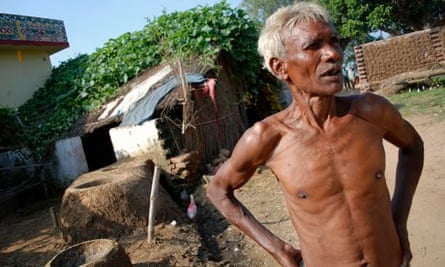
Sunina Devi, who lost seven members of her family in the massacre 15 years ago, said: "If they killed 58, they can kill more. For these seven who died [in Pisai], they will take 70."
In Pisai, too, there is fear of violence. Relatives of Pandey talk of the Maoist campaign of violence against largely upper-caste policemen and landlords and describe the killings of 37 Bhumihars in 1992, in an attack that prompted the creation of the Ranvir Sena.
The difficulty of identifying the Maoists would not prevent the taking of retaliatory action, Pandey's nephew Singh explained, as other targets could be found.
"We have to do something that will act as a deterrent. If no action is taken to protect us, then the Ranvir Sena may have to come once again," he said.
Caste system breakdown
The origins of the caste system are contested. Many maintain that they lie in 3,000-year-old texts central to the Hindu religion. These outline four ranked varna, or rough occupational groups, with the Brahmin at the top and the Shudra, or service providers and artisans, at the bottom.
This hierarchy, reinforced by ritual concepts of pollution and purity, has been increasingly challenged in recent decades, through constitutional law and affirmative action programmes, as well as by "lower" castes themselves and by broader social change.
It has also been challenged by new scholarship, which stresses the role of colonial administrators and experts in codifying caste, a word first used locally by the Portuguese colonists.
British officials are blamed for reducing a multitude of hugely complex, dynamic and varied communities, or jati, to a simple system with a hierarchy that suited their own Victorian values and the vested interests of the Brahmin scholars who helped them decipher the ancient texts.
Some scholars now suggest the effective status of a caste has always been determined by social and economic factors, and legitimised only by reference to beliefs in rebirth or destiny. They prefer to talk of "socially dominant castes" rather than "upper castes".
There are also some who argue that caste has now become a useful identity for effectively mobilising deprived groups, bringing a new edge to their claims for a fairer share of India's growing wealth.
It is sometimes said that caste now matters in India only when people get married or vote. The matrimonial and personal-page adverts in the Times of India certainly reveal the desire of middle-class Indians to marry others of their caste, and winning elections – particularly in north India – still depends on creating coalitions of castes that vote as blocs.
But though it may be true that caste is disappearing as a social marker in urban areas, eroded by the range of social contacts that comes with living in a city, socially dominant (or upper) castes still retain their hold on many key institutions and in areas such as the media. And in rural areas, at least, caste prejudice continues to blight the lives of tens, if not hundreds, of millions.
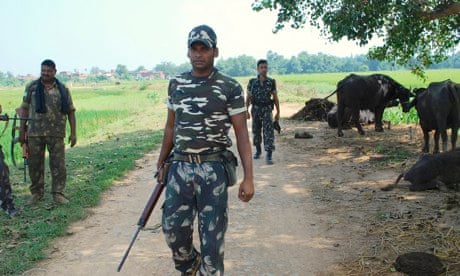
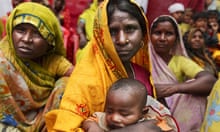

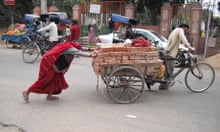

Comments (…)
Sign in or create your Guardian account to join the discussion